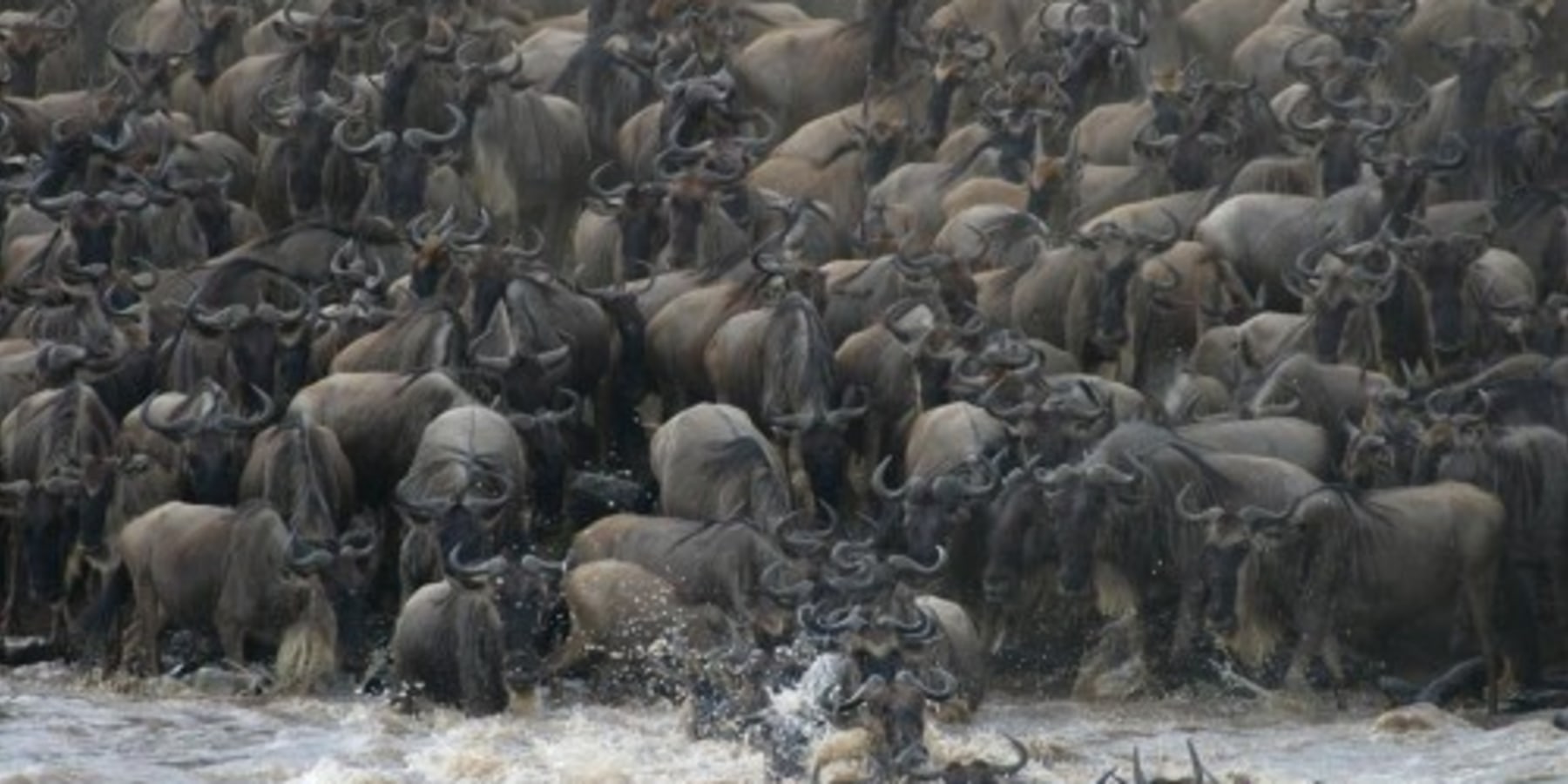
The Path of the Migration
- 1. January – March.
- During the period January through March the seemingly unending short grass plains of the southern Serengeti, and the Ngorongoro Conservation Area (not the Ngorongoro Crater), are inhabited by enormous herds of wildebeest and zebra. Pregnant female wildebeest are attracted to the calcium and magnesium rich grass which is good for milk production. Calving occurs late January through mid March when over 80% of the female wildebeest give birth over a period of a few weeks. An estimated 400,000 wildebeest calves are born during this period
- 2. April – June.
-
The herds continue westwards, towards the Grumeti River. The riverine forest harbors plentiful buffalo and elephant, while there are many hippo and huge, hungry crocodiles in the river waiting for the wildebeest as they come to drink.From late March through early May Tanzania’s long rains are in full effect with regular downpours. It is considered off season for wildlife viewing and many lodges and camps close down. Grass can grow past the roof of your Land Rover and roads are often impassable - 3. July-October.
- The wildebeest rapidly deplete the grass and water in the Western Corridor and Grumeti and start to move on. The migration may still be found in the Singita Grumeti Reserve during July but the odds become slimmer as you move through the month. In a typical year the migration can be spread over huge distances, with the first zebra herds arriving in the northern Serengeti by early July and big herds of wildebeest following later in the month. In a dry year, the first wildebeest could be near the Mara River (the only decent permanent water in the eco-system) by early July; in a wet year, by mid-August. If conditions are very good, i.e. there is plenty of grass and water, the herds will be spread out all the way from Seronera to the Mara River.
- 4. November– December.
- As the rains continue during November the herds move south and east. Heading into December long lines of wildebeest can be seen moving back to the southern Serengeti and its short, rich grasses. The circle of life is complete as they begin to arrive late December into early January. Elsewhere in the Serengeti the grass grows fast and tall making wildlife viewing more difficult

